Amazon Marketing 101: Feed the Shopping Addiction
by Cydney Hatch • May 30, 2018
It’s 2018 and we are all drinking the Amazonian Kool-Aid.
We are a consumerist society and Amazon has fed the beast! Let’s be real, I think most of us have shamefully had our recycling bins overflowing into our neighbor’s yard due to empty Amazon boxes.
Generally speaking, the lines between need and want are blurring and “treat your self” becomes a lot easier to justify when you can get something in bulk for 30% off and you can conveniently receive it tomorrow.
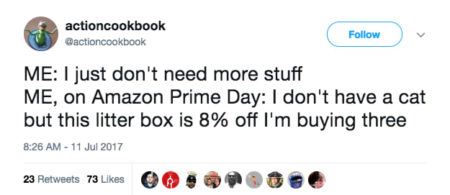
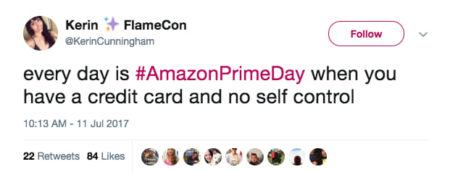
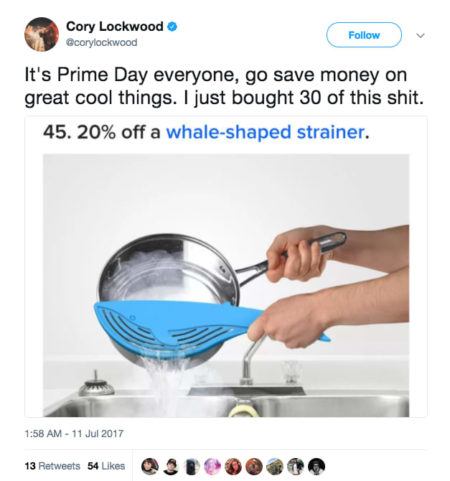
Has Amazon taken over the world and our minds, maybe? Maybe, but nobody cares because we get what we want, quickly!
The Seattle-based retailer has done more to make online shopping BOOM than anything else and it continues to reign as one of the top ecommerce platforms with it’s ability to sell just about everything… fast! (especially if you’re a member of the $99 per year Amazon Prime)

So as an ecommerce business, how can you put the Amazon craze to work for you? Effectively building a strong Amazon marketing plan is the key and I am here to help you learn everything you need to know about Amazon marketing and feeding the shopping addictions of your potential customers.
Let’s dig in, shall we?
Amazon Marketing 101: Understanding Your Advertising Options
Sure, you might already be killing it on Google Shopping, Facebook, and Instagram, but it’s a great time to break into one of the most beloved, popular and biggest ecommerce platforms: Amazon!
For ecommerce businesses, Amazon ads should be a no-brainer. Amazon has all the credibility, audience and professionalism you need for a successful ecommerce partnership (by the way, if you are still trying to figure out if you should sell on Amazon I have a killer article explaining the benefits to Amazon FBA here).
Before we get into Amazon marketing basics, let’s first learn about Amazon’s advertisements and how you can set them up!
Amazon Advertisements: Self-Serve & Premium
Similar to Google search, when you type in a keyword in the Amazon search box and results appear, some of the top results will be sponsored posts—these are considered Amazon ads. They are denoted with subtle “sponsored” or “ad” text (like in the image below highlighting an ad pushing “Nose Moisturizer” for your dog).
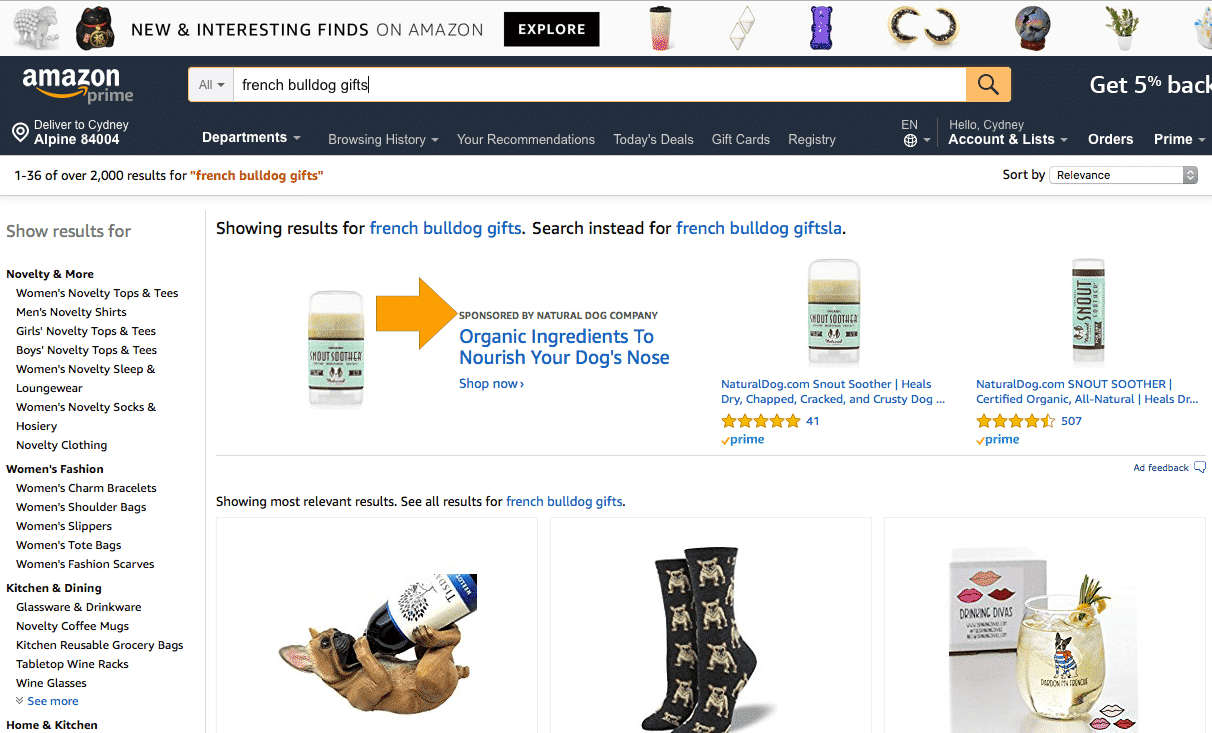
Advertisers who want to gain more visibility for their products on Amazon can pay for exposure by bidding on specific keywords, just like you would with Google paid search ads. By doing this, you will get higher visibility in the Amazon SERPs. The advertiser will then be charged when a shopper clicks on their ad.
Another way Amazon ads will appear is on individual product pages as recommended items and other individual ads. You can see these ad examples below where a winter pom pom hat and dog heartbeat necklace appears on my French Bulldog sock product page.
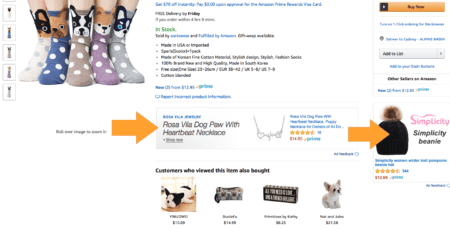
Below this frame, you can see sponsored recommended products based off of your search as well.

Since we are familiar with how Amazon ads will run, let’s look at the two types of advertisements Amazon offers: Self-Serve and Premium advertisements.
Self Serve: Like Google Search
Amazon’s self-serve ads are targeted to customer search terms, products, or interests, helping you get discovered by customers right as they’re shopping for products like yours. So in the examples above, these are like the recommended sponsored item ads.
High-visibility ad placements can help you find a new audience and drive more traffic to your products.
Premium: Like Display Ads
Amazon’s premium ads are targeted more at advertising through banners or other ad formats made of text, images, and video. Amazon allows you to choose from a suite of display, video and programmatic across devices, as well as offline solutions.
Premium ads show up like the pom pom hat and dog heartbeat necklace ads in the examples above.
A unique part of these advertisements is that they can also appear on other websites, similar to how Google’s Display Network works.

To break down advertisement options more Amazon has the following ways you can advertise:
- Sponsored Product ads
- Headline Search ads
- Landing Page ads
- Product Display ads
And so much more!
To check out more of Amazon’s advertisement options click here. To learn more about the advertisement policies click here.
Amazon Advertisements: Setup and Getting Started
Like every other type of ecommerce platform, you will need to setup a personal listing and business platform on Amazon to run ads. Amazon will sign you up with a seller or vendor account that will be the hub for your ecommerce business.
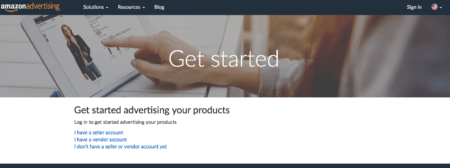
If you don’t have either of these accounts, you can check out their various pricing and plans to fit your needs here.
If you’re a first-party seller, you’ll want to sign-up as a vendor, which is unfortunately by invitation only. If you’re selling via Amazon Seller Central you’re considered a third-party seller.
Seller Central has pay-as-you go pricing options for independent sellers vs. a pro option for those with higher sale volume. Pro merchant sellers also have the option of letting Amazon manage shipping, returns, and customer service, which is not a bad perk! Lastly, Amazon has a Vendor Express option that you’ll want to look at to get around the “invitation only” limitation to be vendor.
Once you’re setup you can start advertising and making some sales! Yay!
Amazon Marketing: Feed the Shopping Addiction
So, Amazon is a big platform…
You might be doubting your ability to make money because of the sheer numbers. I mean, how could your products stand out in the great sea of Amazon products people love?

Luckily, there are a few Amazon marketing tips you can implement to help you stand out from the competition. Your potential customers are addicted, waiting and always looking to buy, it’s your job to just reel them into your business!
Display Beautiful Visuals & Product Photography
Visuals matter! Why?
The average attention span of your customers is 6-8 seconds so that means you only have a few seconds to grab a new customer’s attention. That means you need to sell people on the benefits of your products in the quickest possible way.
Images are your customers’ favorite way to absorb information and they are processed 60,000 times faster than text. High quality visuals and photography are the first experience a potential customer will have with your business, so it’s important you do this well!
Hopefully, they come away thinking your business is high quality, professional and consistent by just scanning your visuals!

To capture buyer interest and land them on your product page (where there is a 15% conversion rate!), spend the time and effort to create high-quality images for your product. You might already have a good setup for your ecommerce website, but Amazon has a few rules for your product photography that you need to follow.
Amazon requires the following from your main product images:
- Main image for your product should only be the product that you are selling, on a white background. This allows for the search results on Amazon to appear clear, uncluttered and uniform.
- Main images should not include accessories that are not included in the purchase. This can be models but also text or badges (no “made in the USA” tags!).
- Depending on your product type and category, Amazon allows 5-9 images for your listing. Make sure these are varying and informative.
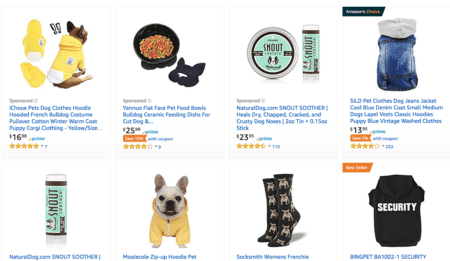
While your main product image is required to specifically be against a white background (like the above examples), Amazon allows you to be a bit more creative with the other images you can have.
So like the main search for French Bulldog clothing above, the yellow hoodie followed the standard for the main images but the other options include product color variation, product scale, quality zoom-ins and dog fit.
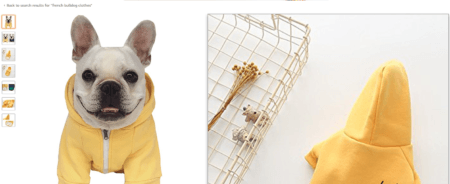
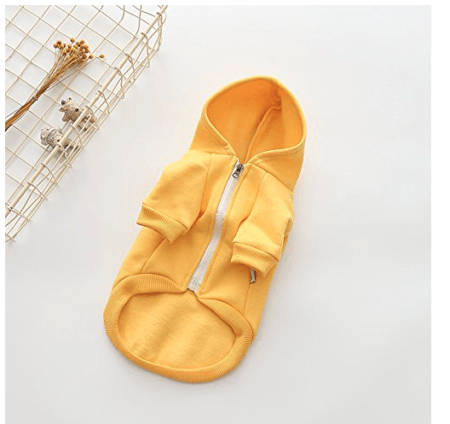
Like this example, other product images could be:
- Your product from different angles
- Product labeling for quality assurance
- Action shots or usage tutorial
- Product features and comparisons
- Product information like size charts
- Products on models
- Scalable shots that help people understand sizing
The sizing on Amazon product listings should be at 2,000 pixels x 2,000 pixels to take advantage of its zoom feature, which allows buyers to scroll over an image to enlarge it.
Once you upload images, make sure you are tracking which ones drive more sales. This may require a bit of testing, so do not be frustrated, you will get it right for your specific needs!
Track number of sales as well as revenue. If you need to test, try switching the order of your images (especially your main product image) or switch out different content to see what performs best!
Use Effective Ad Copy
Customers come to Amazon for shopping ease. That is why your product listings should be clear, informative and creative. You need to draw their attention and make their shopping experience easy!

Ensure your ad text is not only specific about what you are selling, but try and insert some creativity and humor into your ads if possible.
Standing out is more important then ever amongst the endless search results of Amazon. Instilling a sense of urgency can also be helpful. We will talk about promotions and sales below, but including this in your taglines and descriptions can also drive better sales!
Every product page needs a great title, a description and details. All of these components tell a customer what your product is and what it is all about so make sure you are specific, detailed and clear.
For example, if you are selling this French bulldog waterbottle it would not be enough to just describe it as that. Customers want to know what they are buying since they are not in store to experience it. This is where your details and description sections come in handy.
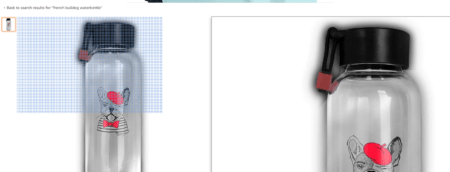
To take a “French bulldog waterbottle” a step further, you would want to include the following details to help your customer be well informed about your product:
- How many ounces/cups of liquid it holds
- Is it BPA free or made or special material?
- Is it dishwasher safe?
- How long does it keep a liquid cold for?
- Size (height/weight)
- Design material and care
- Age appropriateness for use
When it comes to creating a zippy and meaningful title for your product, Amazon allows about 150-250 characters. So, make sure you are short and descriptive. Again, just listing “French bulldog waterbottle” does not really help your sales nor your brand.
You can squeeze some Amazon marketing magic in your title using keywords. Putting strategic keywords in your title can help your product rank so make sure you utilize some of the character space for keywords.
A successful title should include:
- Brand name/indentity
- Name of product
- Any distinguishing features such as color, size or use
- Any keywords you want to rank for
So, in our French bulldog water bottle example, your title might look something like this:
“French Bulldog Temperature Resistant Carry Rope Portable Bottle Water Bottle 550 Ml”

By optimizing these two elements in your product page you can make the most of your Amazon marketing. Including helpful keywords which will help your marketing needs and give your potential customers more information about your product before they even click on the product itself!
Use Helpful Keywords
Since we talked about keywords in the previous section, let’s expound on how keywords are helpful for your Amazon marketing needs!
We talked a bit already about how Amazon advertising is a lot like Google—keyword strategy is no different on Amazon. You will implement a lot of the same keyword strategy from Google to your Amazon marketing!
Negative keywords are key to reducing wasted spend from irrelevant clicks. I would also implement specific match types and steer away from clear broad matches. The focus should be on phrase and exact match with Amazon keywords!
Brainstorming keywords can be tough but consider the following example. If you are an ecommerce business owner selling umbrellas, you will want to brainstorm and target Amazon keywords related to:
Weather: When people need an umbrella they have to deal with the unfortunate weather. They may have questions about the quality of the umbrella. For example, will the umbrella invert in the wind? Is the material durable, water resistant, etc? So, if I am trying to market my umbrellas, I should create content and descriptions that provide answers to these questions and concerns.
Travel: Umbrellas are sometimes things you pack for trips. You always need to be prepared, so travelers rely heavily on the sizing of products to pack in their suitcases, cars, etc. Keywords that describe sizing and usability like “travel size”, etc could be a good way to catch the eye of these potential customers.
Gender/Age: Umbrellas will have some gender and age distinctions, so it would be good to think about the umbrella products, the sizing and the target user. If you have an adult umbrella make use you are not selling a child that product. Identify the user with your keywords.
It is also helpful to look at your competitors and see what terms they are using and how you can improve your own searches or implement negative keywords effectively. To find your top competitors, search broad terms you are selling like dog leashes and see which brands appear in the search results.
Look at some of the top profiles and pick apart what they are doing with all aspects of their business and reverse engineer!
If you need extra help, you can use apps like AMZ Tracker. If you have never heard of AMZ Tracker you have seriously missed out! It not only looks at keyword planning but also looks at the competition’s sales as well as keyword tactics that can help your product listings. This can be an invaluable tool when improving your Amazon marketing!
Be Thoughtful With Campaign Structure
Again, if you are already familiar with AdWords, you are going to rock at Amazon marketing campaigns! Use your AdWords organizational skills to thoughtfully organize your campaigns and ad groups within Amazon’s ad platform.
Each main product category should have their own separate campaign and under them should be the specific ad groups that are more specific! Doing this can help products get the proper marketing attention they deserve!

So for example, I sell Dog accessories; I would want to start with my top selling products:
- Dog Leashes
- Dog Bowls
- Dog Beds
Under each of those campaigns, I would then create ad groups around more specific categories.
For example, using the campaigns above I would break them down further, like so:
- Dog Leases: harnesses, retractable, sized
- Dog Bowls: collapsable, metal, stands
- Dog Beds: car, travel, washable
Once you have these ad group, you will want to add in relevant keywords and then create the ads for each keyword grouping.
A solid account structure will ensure your ads are relevant, which will in turn save you money and increase your ROI.
Give Back to the Community
Everyone is always looking for ways to give back to community, so why not use this as a sales tactic to make the world a better place and make sales?
Positive for positive!

Businesses that give percentages of their revenue to charity (like BoxLunch, WeWood, Hand in Hand and Warby Parker) are incredibly popular. As it turns out, you too can use this incentive in your Amazon marketing!
By opting into AmazonSmile programming, Amazon donates 0.5% of the price of an eligible AmazonSmile purchase to the charitable organization of the purchasing customer’s choice.
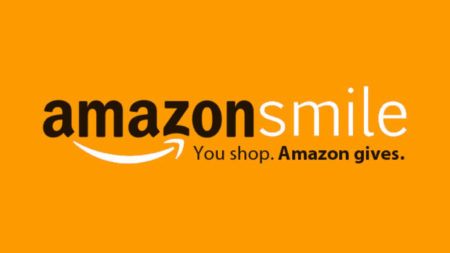
Every item available for purchase on Amazon is also available on AmazonSmile (smile.amazon.com) at the same price. You will see eligible products marked “Eligible for AmazonSmile donation” on their product detail pages.
Make sure you remind your customer’s that this type of work matters to you by having the Amazon marketing logo apparent on your business listing etc.
AmazonSmile charities include: World Wildlife Fund, American Cancer Society, or customers have the chance to pick their own!
Utilize Promotions
People love promos! Whether it’s codes for discounted prices, buy one get one free or additional gifts, people can’t get enough!
Amazon provides a lot of great ways to boost marketing through promotional programs! By offering promotions, discounts and deals for your products, you can be listed under “Hot Deals” and “New & Noteworthy” categories, which will generate enormous amounts of traffic.

“Lightning Deals” are a great way to sell quickly to potential customers, ultimately leading to more reviews and interactions with your ecommerce business.
The goal here is not to eat losses in the beginning or offer wild discounts, it’s about sparking interest in your business and products. When you run meaningful promotions, you gain reviews and build a following of loyal customers.
Sometimes, as a business owner, you need to give a little to get a little. Reasonable promotions are a great way to get your marketing efforts started!
Another great Amazon marketing promotion is the “Early Review Program.” With this program, Amazon randomly selects customers who leave reviews and provides them with a digital giftcard to thank them for sharing their thoughts.
There is no guarantee that this reviewer will be positive towards your business, but it’s a great opportunity to build exposure and relevance quickly for your Amazon business listing with multiple reviews.
Lastly, consider giveaways. Now, admittedly, giving stuff away for basically free is not great for the short term business goals you might have, but doing giveaways can provide long term benefits by increasing search ranking, customer service and brand loyalty.
Get Your Pricing Right
Finding the right pricing for your products is tough enough, but Amazon adds a section in your selling agreement, a pricing parity clause which you need to really to be mindful of if you do not want to be penalized or shut down on the platform!
In the clause, it states that your item price and total price can’t be lower than any other online sales channel according to the ‘general pricing rule’. This includes your own personal ecommerce sites. If you break this agreement, you might be penalized or put on hold as a vendor on Amazon.
Create Stellar Customer Experience & Follow Up
Some of the best and most memorable businsses I have interacted with on Amazon sent more than just an order confirmation email. They sent caring content throughout my shopping experience including a review/follow up with customer satisfaction.
For example, I bought my boyfriend a new comforter insert and this Amazon vender sent the following email:
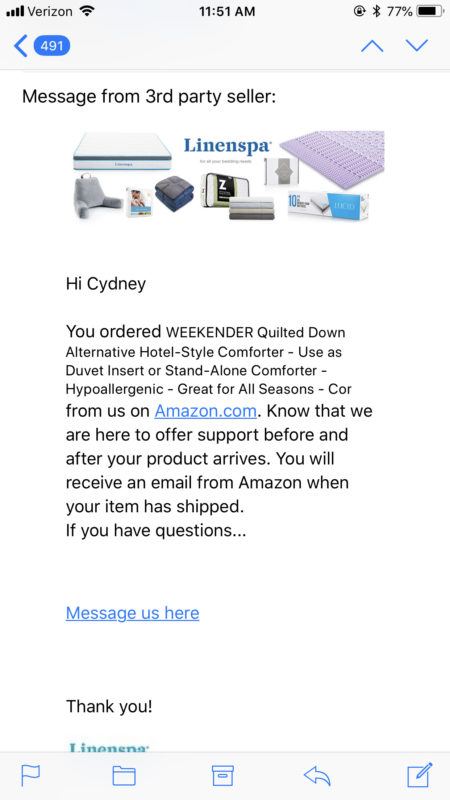
This email also came with a “product care” attachment which shared cleaning and other product information that I found helpful!
Although this isn’t an earth shattering promotion or something I immediately benefited from, it did leave me appreciating this vendor’s care. Nurturing relationships with your customers is a crucial part of a successful ecommerce business these days.
In an age of automation and innovation, it’s great to connect on a personal level with meaningful content. It sets you apart from the masses. So, send helpful content to your customers and respond to their reviews!
Another piece of customer care comes in paying attention to the Question and Answer section of your product listing!

This is an incredibly underutilized Amazon marketing opportunity! This creates a social proof of customers and gives you a direct way to communicate and interact with your customer base. Look for opportunities to help, inspire and engage customers in creative ways!
BONUS SECTION: Amazon Marketing Apps to Help!
Unicorn Smasher
Unicorn Smasher is a free Amazon marketing tool to supercharge your Amazon product research through comprehensive data, full dashboards, sales estimates and it’s free to use!
What more could you ask for?
With Unicorn Smasher, you’ll have comprehensive product data that includes prices, bestseller ranks, estimated sales, reviews, and more. Additionally, you’ll get a dashboard that enables you to manage all of your research in a single place.
Unicorn Smasher also offers up-to-date revenue estimates for tens of thousands of products. Use that info to accurately produce sales forecasts. Overall, it’s a great tool that will save you hours of research, take the guesswork out of Amazon marketing and put a stop to analysis paralysis.
Camel Camel Camel
Camel Camel Camel is known as a Amazon marketing price tracker. Camel Camel Camel’s main selling point is that it will generate alerts based on price and availability changes.
https://www.youtube.com/watch?v=V7-P6VunnT4
To track a product, all you have to do is set price thresholds when you want to receive an alert, assuming the product is also in stock. In this context, alerts can be thought of as log entries, which are delivered via email, Twitter, or RSS feed, containing current price information and useful links (Amazon product page, price watch page, etc).
Additionally, camelcamelcamel also provides historical price charts for more than 18 million Amazon products.
A Conclusion
We’ve covered a lot of stuff to produce great product listing and Amazon marketing plans!
Amazon can be a very competitive and complex ecommerce platform, but if you spend some time optimizing and promoting your listings and using these tips, you can leave many of your customers wanting more!
What do you love about Amazon? What features do you feel inspire customers to come back for more? What keeps you coming back? Comment below and share some of your favorite marketing strategies using Amazon!





